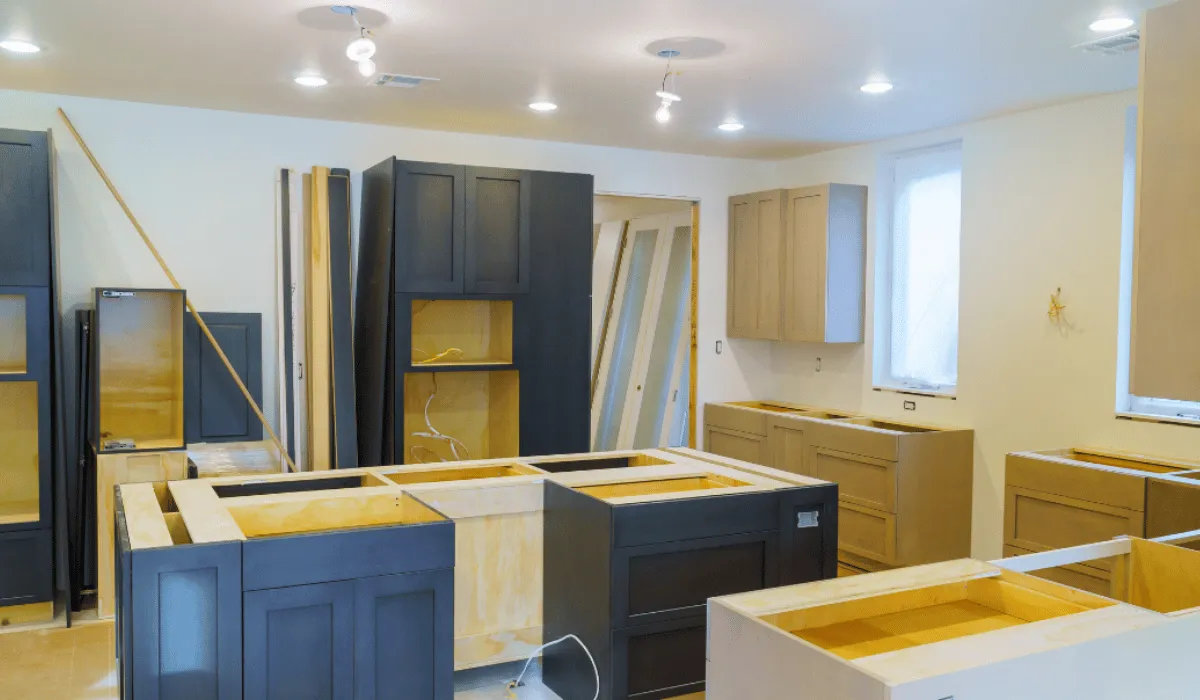
New Home Build Regrets & Quality Control in Construction
New home build regrets: An interior stylist’s guide to smarter choices
As an interior designer and home staging expert, I’ve had the privilege of working with countless new homeowners who are eager to bring their dream spaces to life. But even with all the excitement, I’ve noticed one recurring theme: new home build regrets. No matter how beautiful the design or how carefully chosen the finishes, there are always lessons that surface once the dust settles.
Today, I want to share the insights I’ve gained—both from my professional background and my personal experience of navigating a new build. My hope is that you can avoid the expensive mistakes I’ve seen time and time again.

A thoughtfully styled new build house designed with high standards in mind to help homeowners avoid common new home build regrets.
Prioritizing customization wisely
One of the first decisions new homeowners face is how much to customize during the building phase. From flooring and cabinetry to countertops and tile, the temptation to upgrade everything can be strong. My advice? Focus on structural elements that are difficult and expensive to change later.
For example, extending kitchen cabinets to the ceiling is worth the investment upfront. I’ve seen clients regret stopping at standard heights, leaving that awkward space above that collects dust. On the other hand, finishes like paint colors, light fixtures, and cabinet hardware can be updated later, often at a lower cost.

Upgrading kitchen cabinets to ceiling height during the construction process ensures compliance with project specifications and avoids costly mistakes.

Applying epoxy flooring in the garage before the end of the construction project saves time, improves durability, and meets quality requirements set by contractors.
The importance of quality control in construction
If there’s one lesson I stress to clients, it’s the need for quality control in construction. Don’t assume that the builder project manager will catch every flaw. Inspect regularly, ask questions, and document everything in writing.
I’ve walked into homes where misaligned tiles, uneven flooring, or poorly sealed windows became long-term frustrations simply because no one flagged them during the build. A small oversight early on can snowball into a much bigger problem later—sometimes even leading to structural issues.

Inspecting the framing stage with a quality control manager keeps the construction project on track and ensures safety standards are met.

Tile alignment errors are common new home build regrets and highlight the need for a clear quality control plan during the construction process.
Planning electrical layouts with lifestyle in mind
Lighting and outlets might not feel glamorous, but they can transform how a home functions. I always encourage clients to visualize how they’ll actually live in each room. Where will the sofa go? Will you want accent lighting for artwork? Do you plan to work from home and need extra Ethernet ports?
Thoughtful planning now can save you from relying on extension cords or poorly placed lamps later.

Electrical and wiring plans should follow client specifications and quality standards to avoid costly mistakes in the future.
Colors, materials, and flooring choices
As a stylist, I know how much impact color and texture have on a space. Choosing flooring first is a smart strategy since it grounds the entire design. From there, select cabinetry, countertops, backsplash, and wall colors that harmonize.
One regret I often hear is installing carpet in bedrooms instead of opting for low-maintenance alternatives like large scale tile, engineered wood or luxury vinyl plank. Not only is it easier to clean, but it also helps reduce allergens and creates a seamless flow throughout the home.

Coordinating flooring, cabinetry, and wall colors ensures good quality design decisions and reduces risks of non-conformance during the build.

Choosing wood or LVP flooring in bedrooms supports quality construction and avoids costly mistakes tied to carpet maintenance.
Outdoor living and neighborhood dynamics
Don’t overlook outdoor spaces during the build. A slightly larger patio or upgraded landscaping can make a huge difference in how you enjoy your home day to day. I’ve had clients regret skipping a modest patio extension that would have cost less rolled into the mortgage than retrofitting later.
Equally important is researching neighborhood dynamics. Road access, school districts, and future developments can impact your daily life more than you might expect. A beautiful home loses its charm if commuting or amenities become a constant frustration.

A small patio shows how skipping outdoor space upgrades can become one of the biggest new home build regrets.
FAQs about new home build regrets
1. What are the most common new home build regrets?
The most common new home build regrets include skipping essential upgrades like hardwood flooring in the primary bedroom, underestimating outdoor space needs, overlooking electrical layouts, and not being heavily involved in the construction process. Many homeowners also regret not clarifying project specifications with contractors or failing to align design decisions with their original plan.
2. How can quality control in construction prevent expensive mistakes?
Strong quality control and quality assurance during a construction project help avoid costly mistakes and correct deficiencies before move-in. A clear quality control plan ensures that subcontractors, project managers, and involved parties are on the same page. From meeting safety standards to checking acceptance criteria, ongoing inspections by a quality control manager help deliver a home with zero defects.
3. Which upgrades should I prioritize during a new build?
During the planning stages of a custom home, prioritize upgrades that are difficult to change later, such as flooring, tile, and kitchen cabinets. For example, a white kitchen or extending cabinetry to the ceiling are upgrades that align with quality standards and reduce future non-conformance issues. Meanwhile, cosmetic items like accent paint colors, lighting, or bathroom fixtures can often be updated later at a lower cost without disrupting the construction process.
4. Is it worth upgrading my electrical layout during construction?
Yes. A well-planned electrical layout supports both safety, function, and convenience. Outlets, lighting, and Ethernet connections should be designed around your family’s lifestyle—from the laundry room to the bonus room and even the primary bathroom. Proper planning during the construction process should not only meet client specifications but also comply with regulatory requirements and industry quality standards. Skipping this step is one of the most avoidable new home build regrets.
5. How can I avoid regrets with neighborhood and location?
Many construction companies focus on the house itself, but as a homeowner, you should also research the neighborhood dynamics. Think about traffic patterns, proximity to schools, and access to outdoor space. A good quality home design can still feel disappointing if commuting costs time and energy daily. Consider both your wish list and your budget when deciding between a new build and an existing home. Aligning lifestyle needs with construction methods, future projects, and community growth is essential to avoid long-term regrets.
Final thoughts
Building a new home is an exciting journey, but as an interior designer and home staging professional, I can tell you firsthand that new home build regrets are avoidable with the right planning. Prioritize structural upgrades, stay on top of quality control in construction, and think ahead about how you’ll actually use each space.
If you want to avoid the most common new home build regrets, always prioritize quality control in construction alongside design choices. Your home should not only look beautiful but also function effortlessly for your lifestyle. By making thoughtful choices during the build, you’ll create a space you’ll love from day one—without the “if only we had…” moments later.
Want more tips and design insights? Watch my video and leave a comment if you have any questions.

For all my favorite Amazon purchases, check out my Storefront where you can find easy solutions to your design needs.

